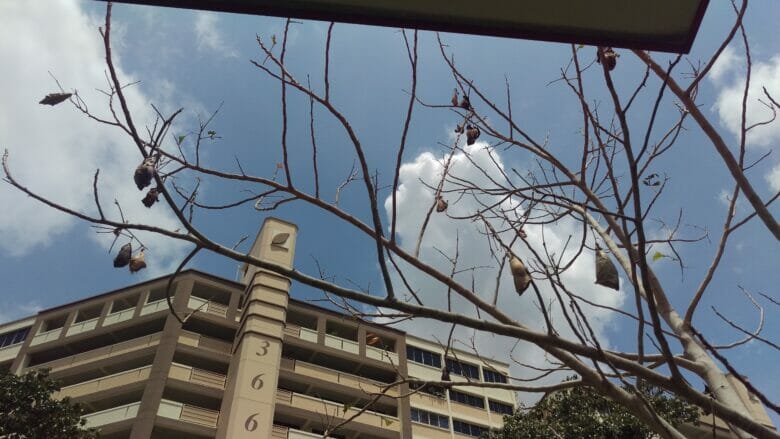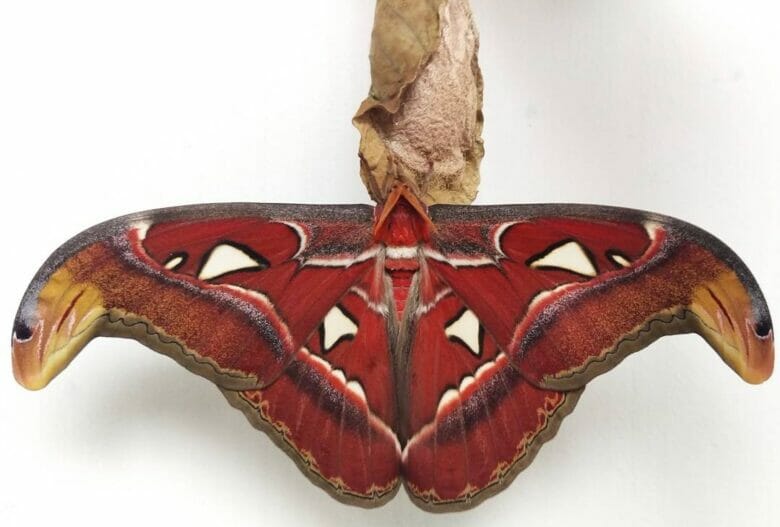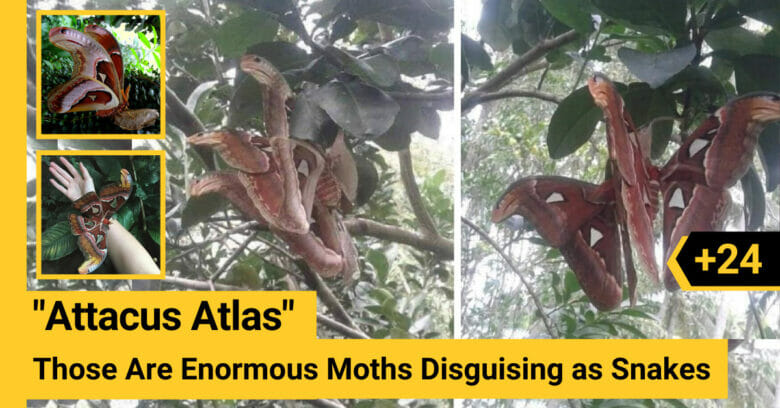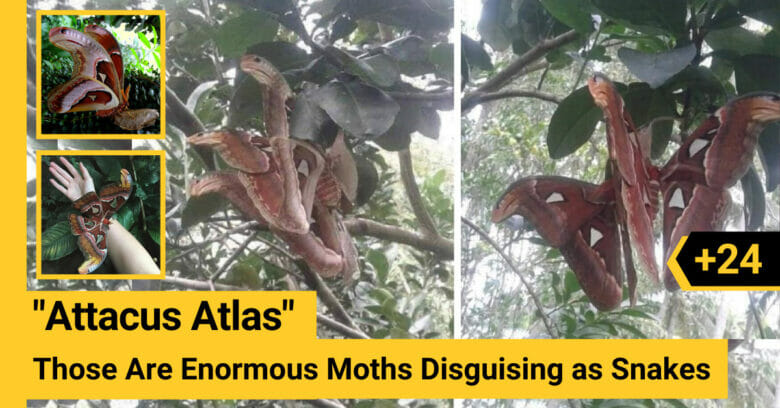
The atlas moth is one of the largest moth species in the world. Its massive wingspan is wider than a human hand.
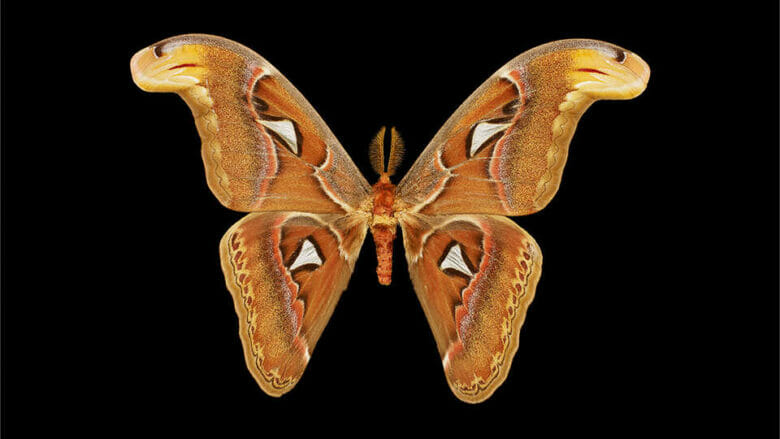
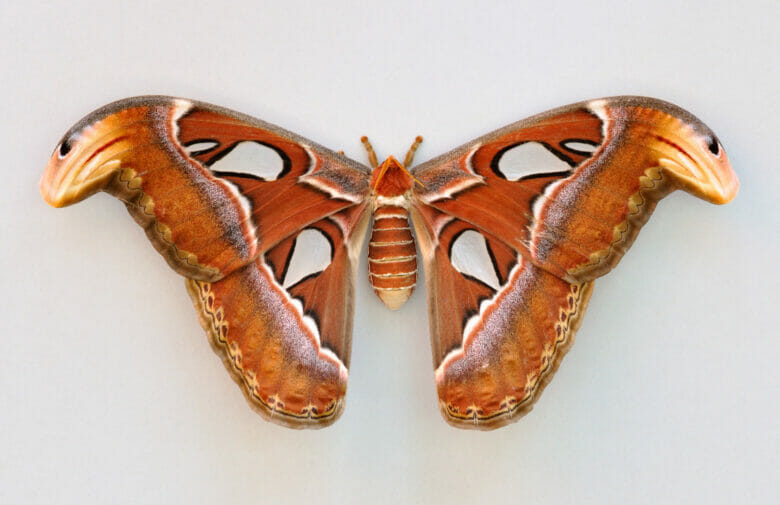
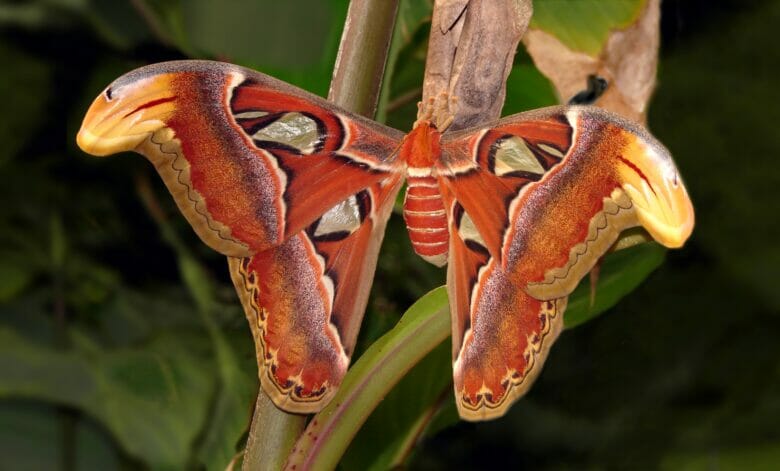
Found in tropical and forest habitats throughout Asia, the atlas moth has reddish-brown wings with triangular patterns outlined in black.
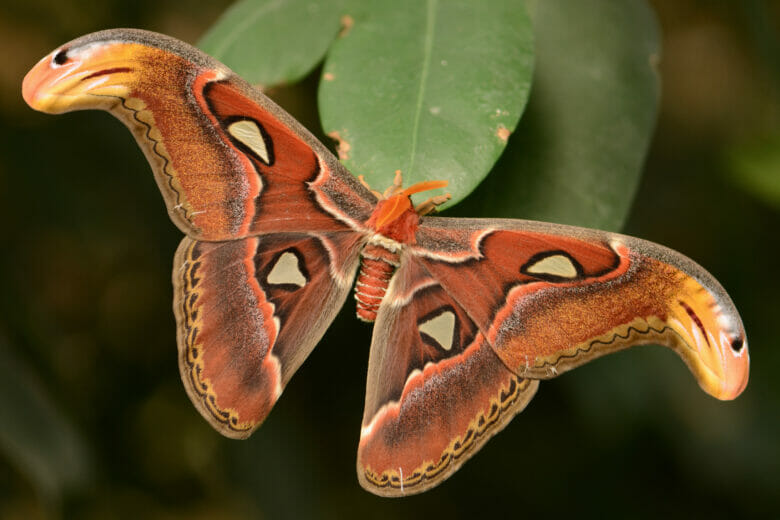
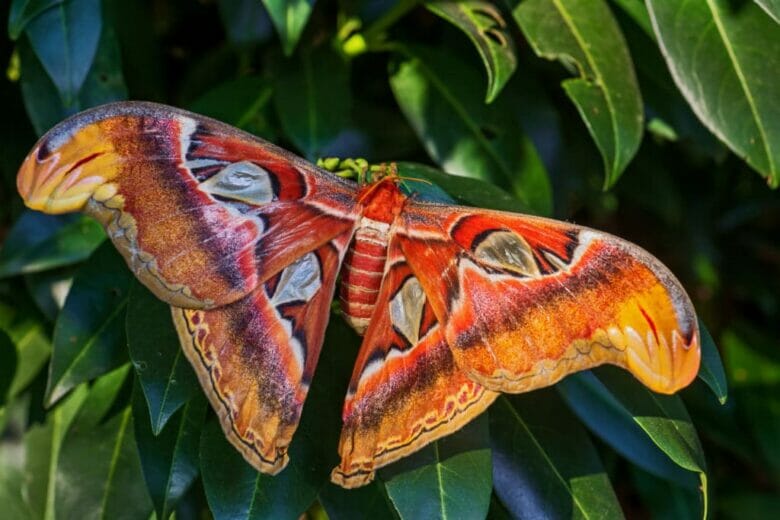
This extraordinary moth also lacks the ability to eat and has an incredibly short lifespan.
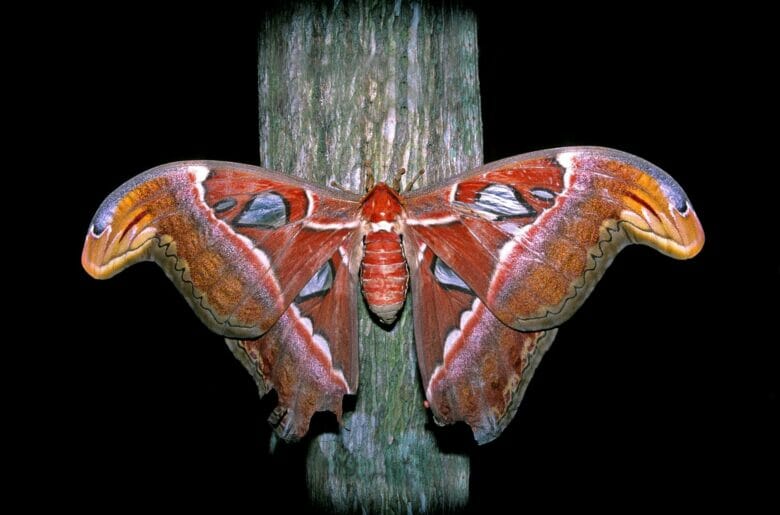
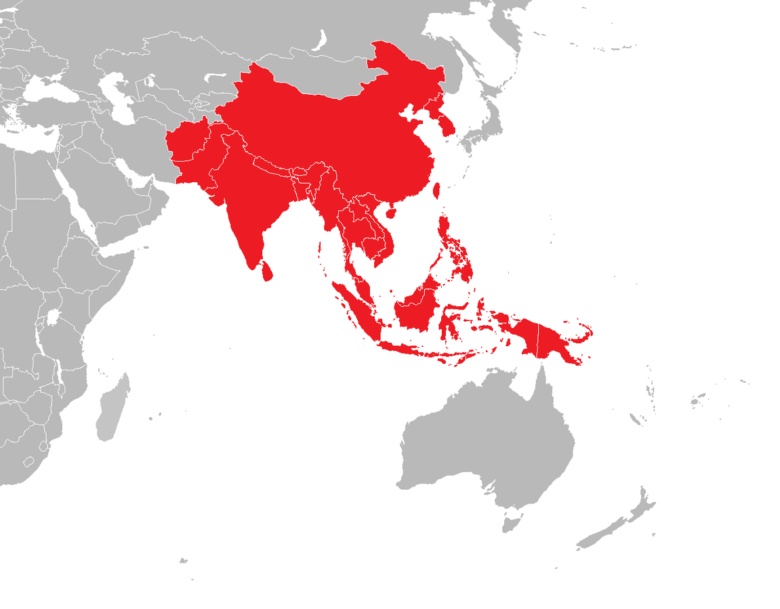
From their ability to mimic a snake to their impressive silk cocoons, discover the most fascinating facts about the atlas moth.
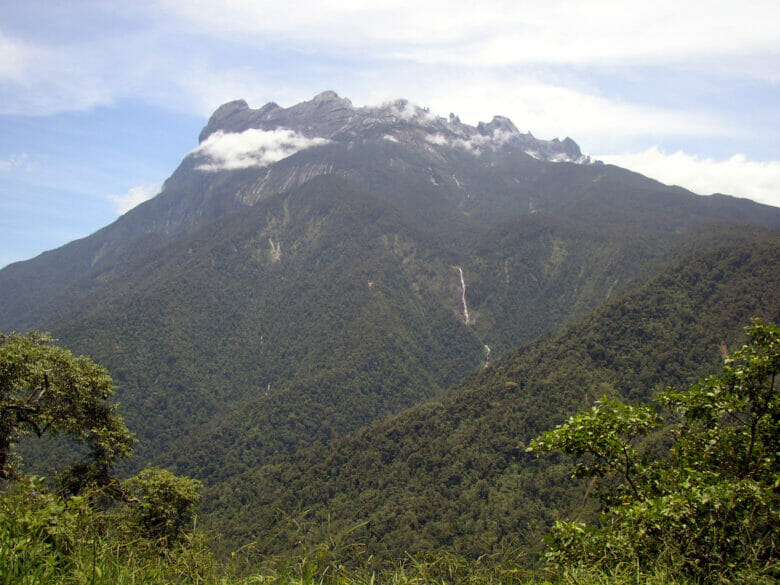
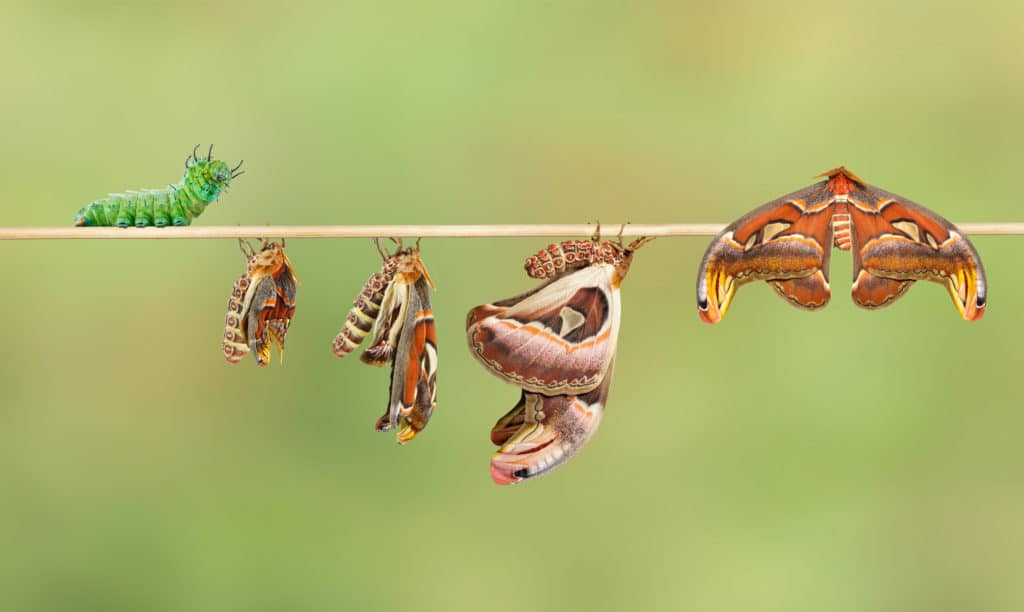
– Atlas Moths Are Massive –
One of the largest moth species in the world, the atlas moth (Attacus atlas) is found throughout Asia
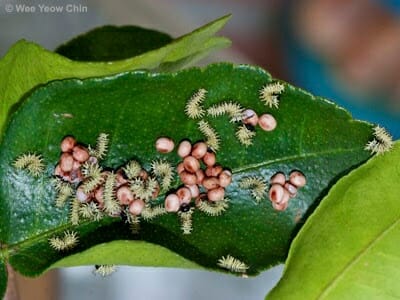
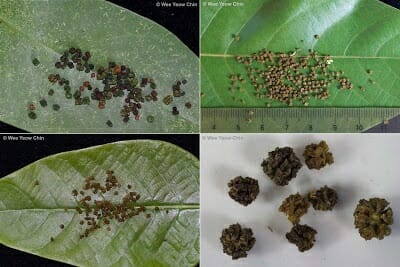
and is widespread in China, Bangladesh, Cambodia, Hong Kong, India, Laos, Malaysia, Nepal, and Taiwan.
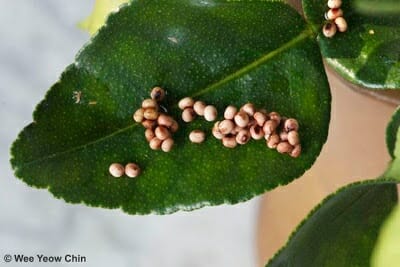
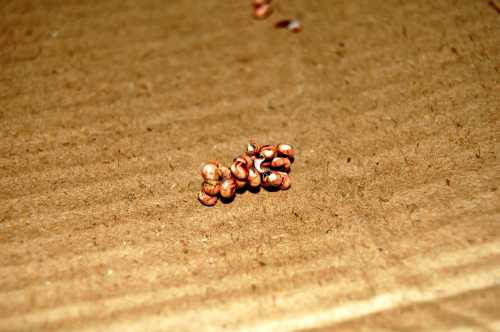
With a wingspan of up to 12 inches and a total surface area of as much as 62 square inches, it is second only to the white witch moth in wingspan and the Hercules moth in total wing surface area.
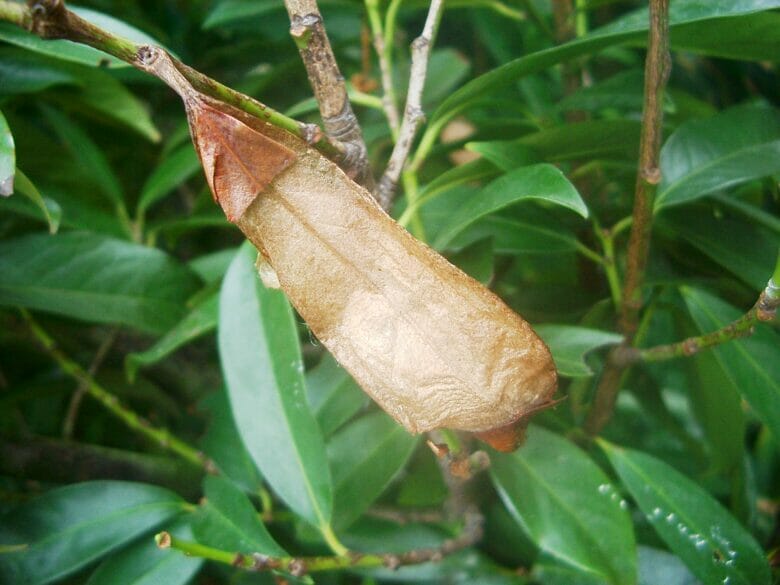
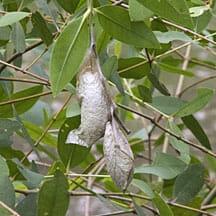
– They Are Huge as Caterpillars –
Atlas moths begin their lives as good-sized caterpillars.
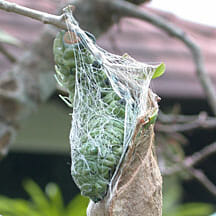
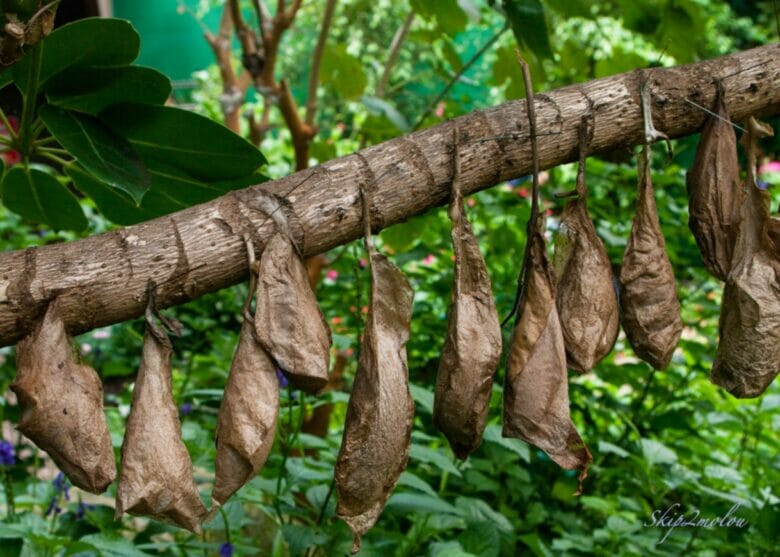
Two weeks after hatching, the atlas moth caterpillar feeds ravenously, first on its eggshell and then on its favorite leaves from citrus, guava, cinnamon,
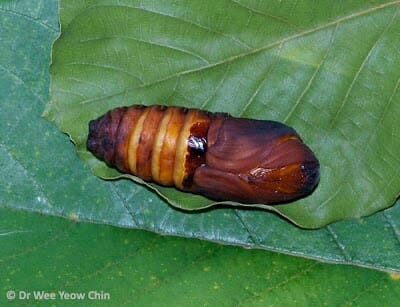
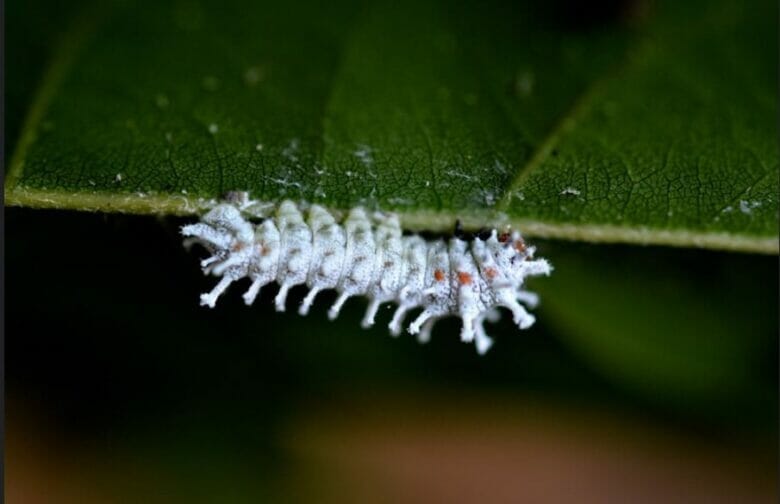
and Jamaican cherry trees, taking in enough food to last for its pupa and adult moth stages.
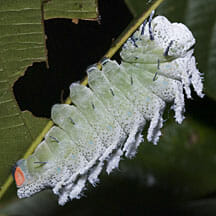
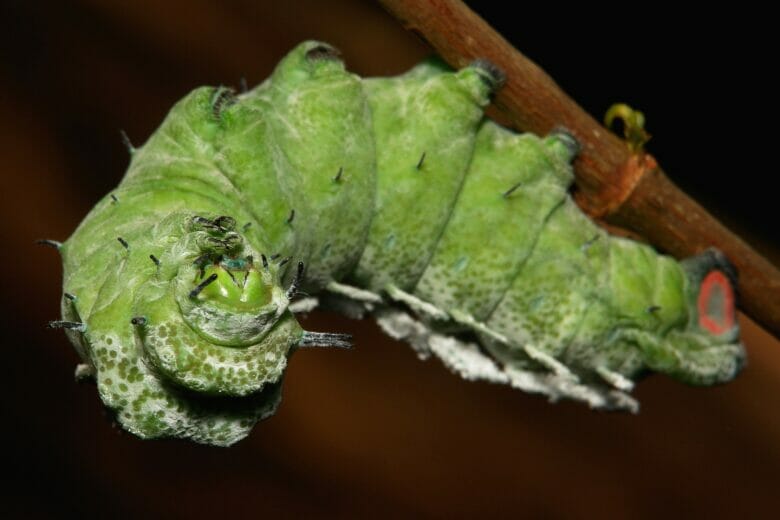
Those caterpillars that live in captivity (such as in a butterfly conservatory) may be kept in a special feeding area to feast on privet, a type of flowering shrub, so as not to decimate other plants.
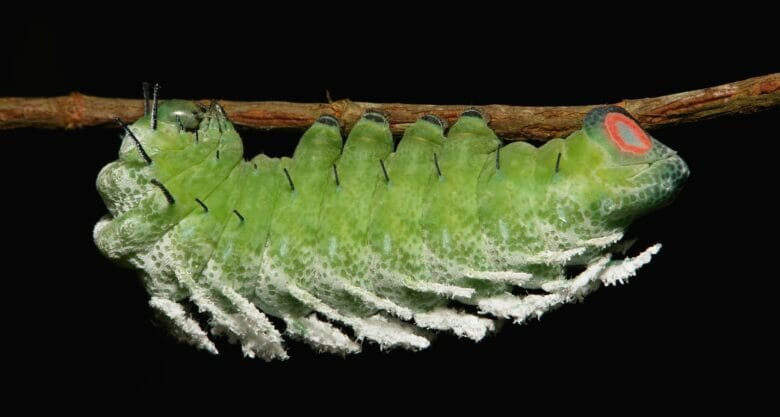
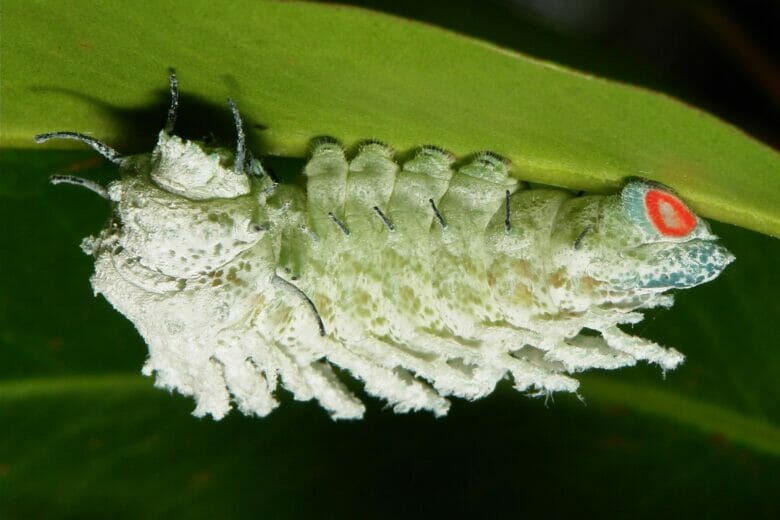
Luke Brown, manager of the British Natural History Museum’s butterfly house, said, “We don’t let them roam free in the exhibition because they eat so much.
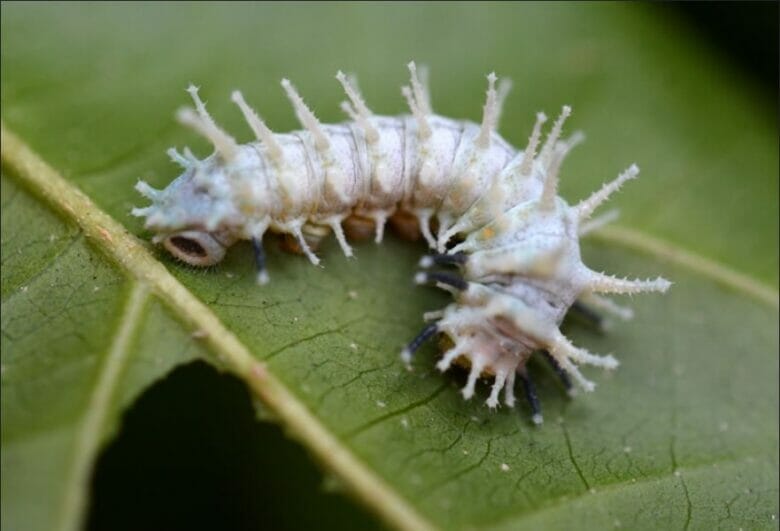
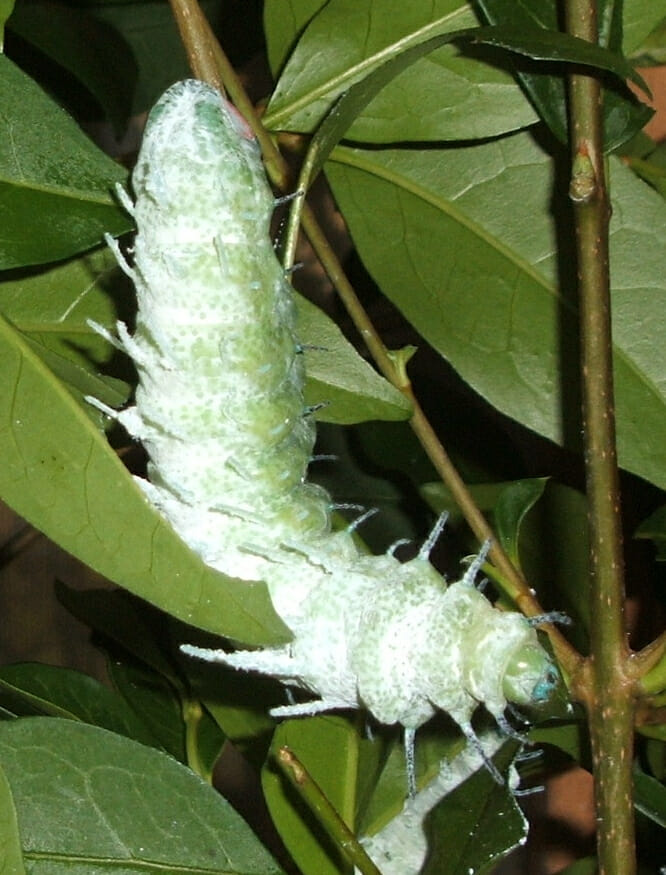
This allows them to build up fat reserves for the adult to live off.
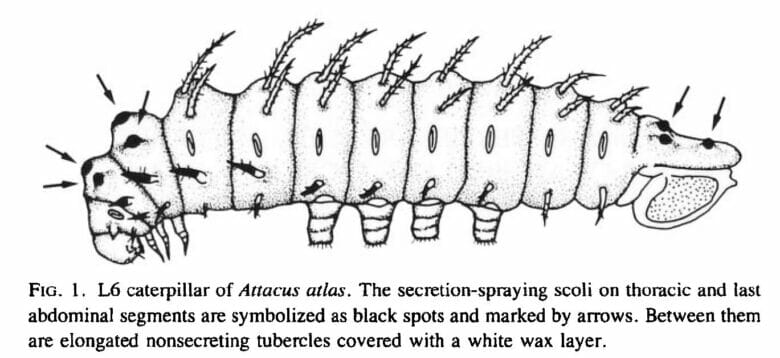
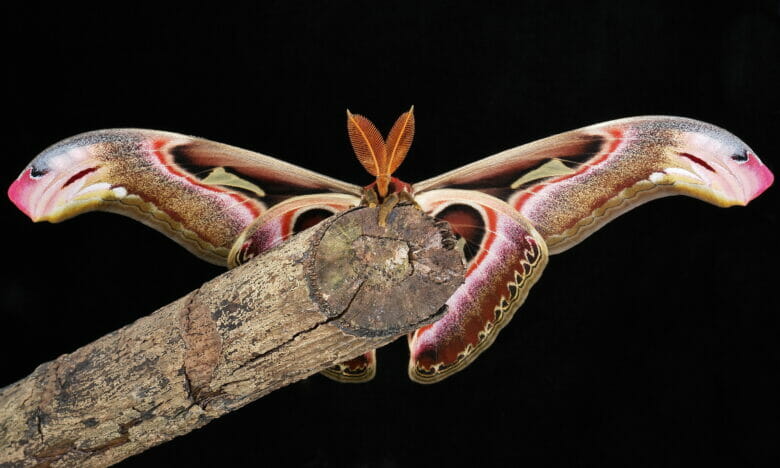
If we didn’t monitor their eating, we would have no plants left in the butterfly house, so we keep them in their own feeding area while they are growing.”
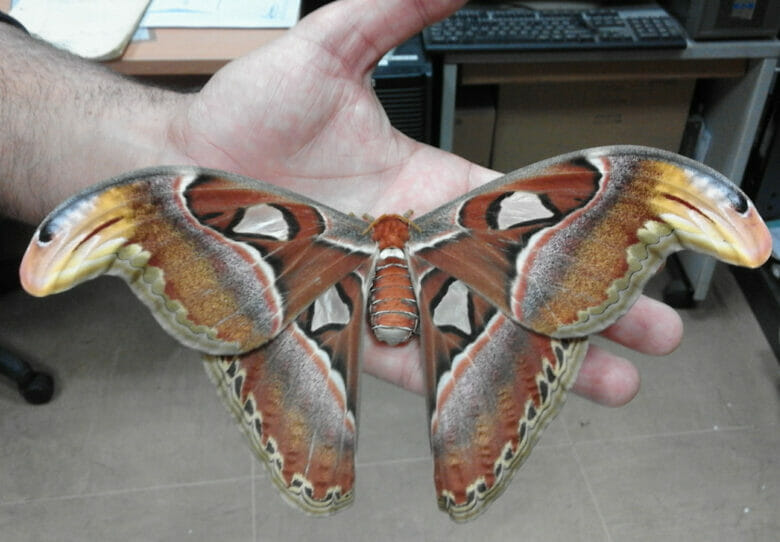
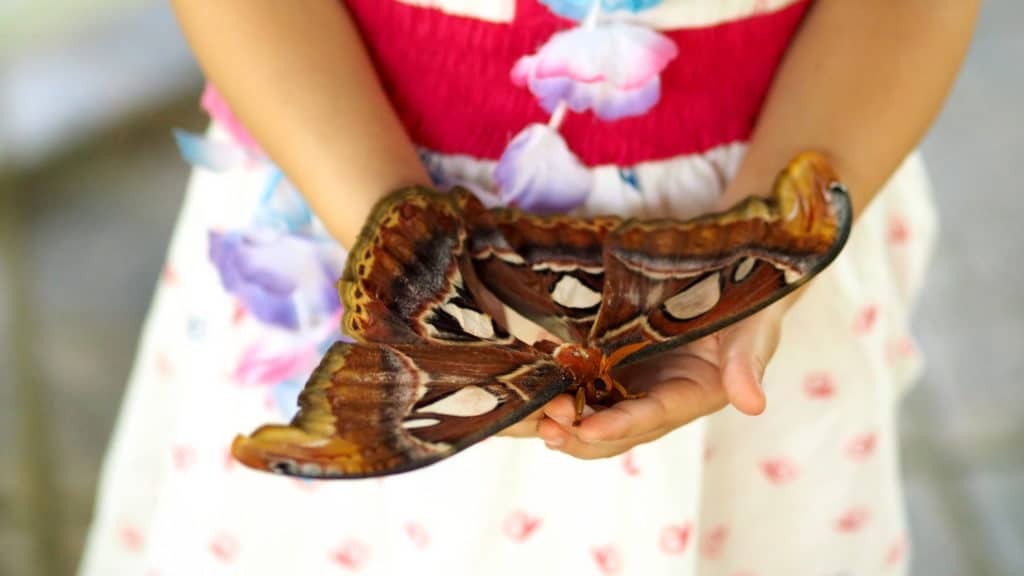
The caterpillars can reach up to four and a half inches in length before they pupate. They spin a cocoon filled with bits of leaves and emerge after about a month as an enormous atlas moth.
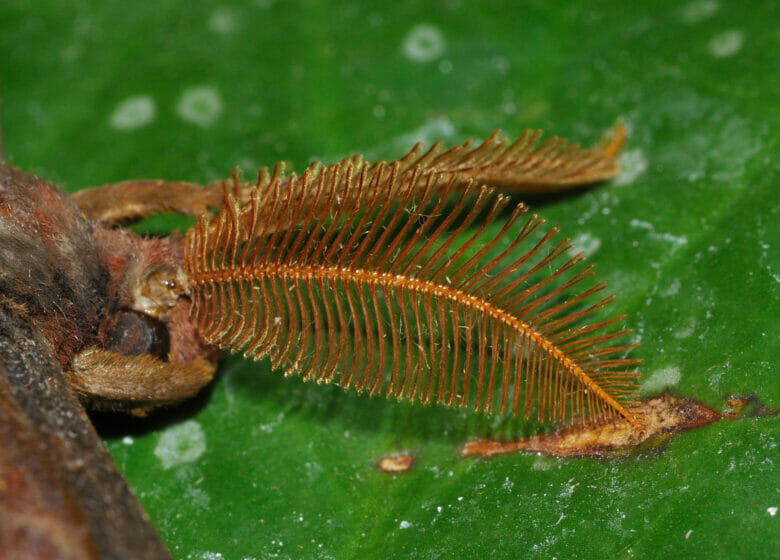
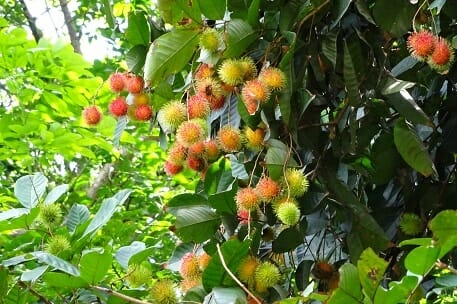
– The Caterpillars Have a Great Defense –
Atlas moth caterpillars are also impressive in their defense strategies.

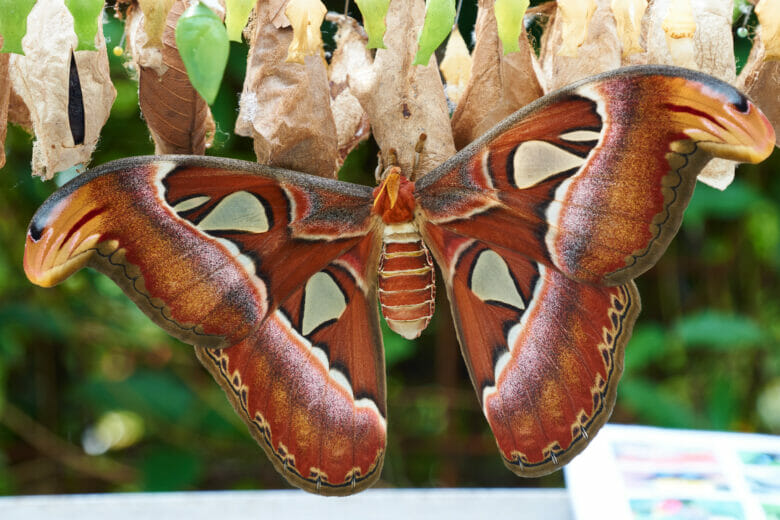
They have a threatening appearance the caterpillars are a bluish-green color with spiny protuberances and a white waxy coating.
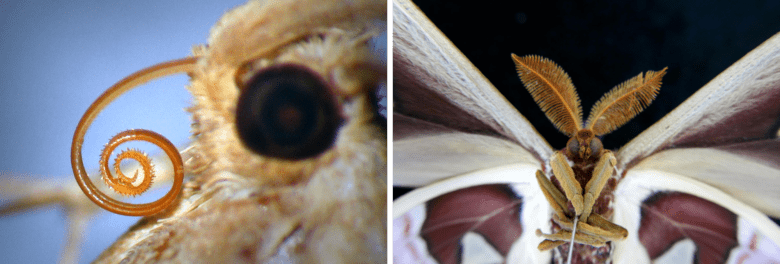
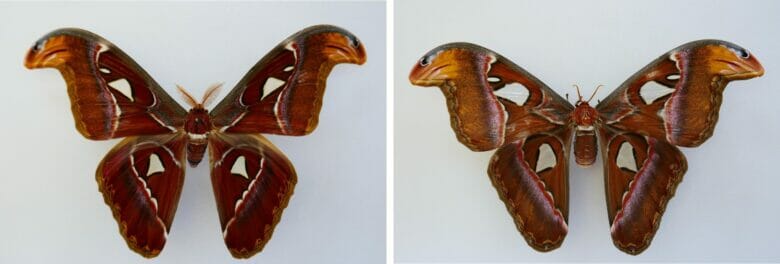
The larvae have a secretion that they can spray a distance of nearly 12 inches that has a powerful odor and can be used against predators like ants and lizards.
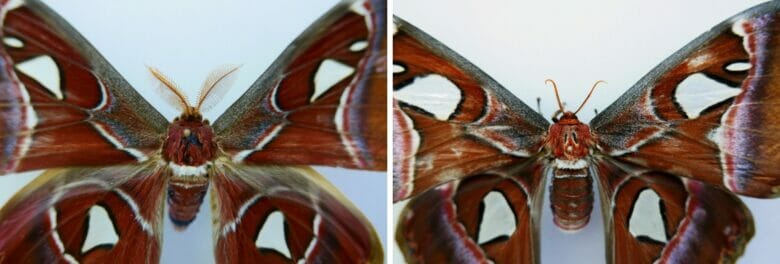
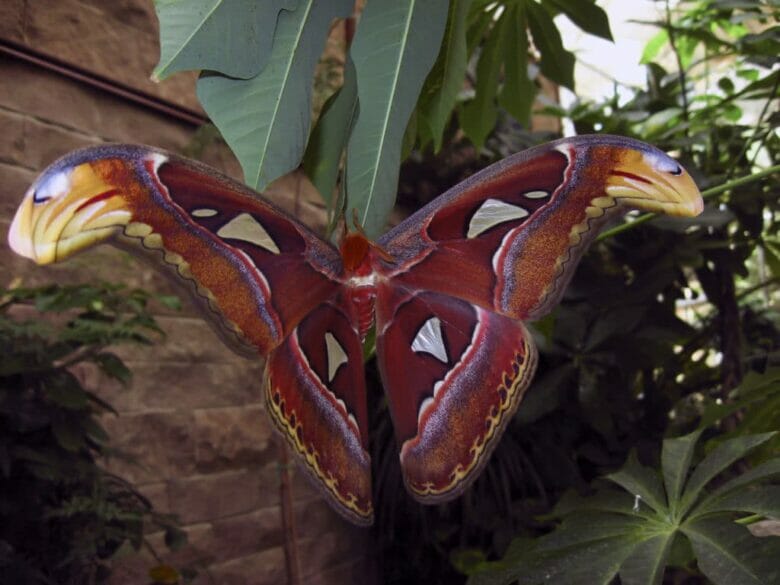
They can also spray an “irritant secretion” into the eyes of threatening birds from up to 20 inches away.
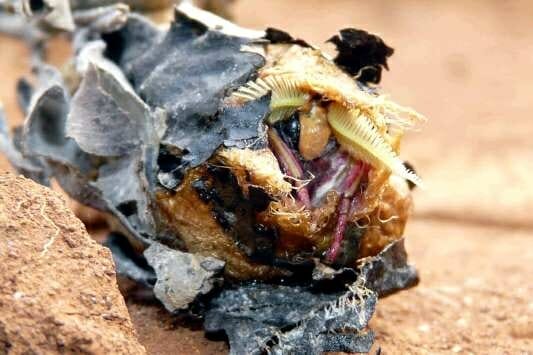
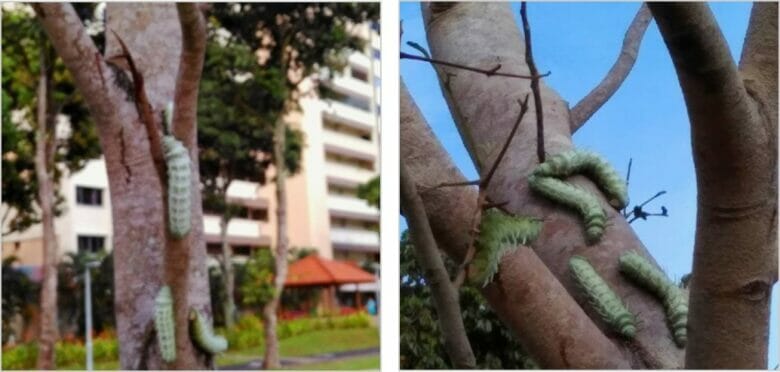
– They Don’t Eat as Adults –
Adult atlas moths don’t eat because they don’t even have fully formed mouths.
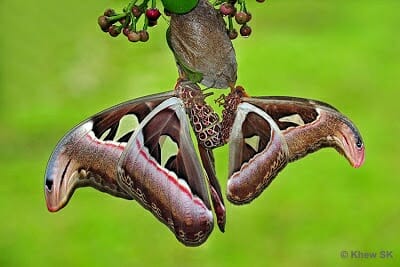
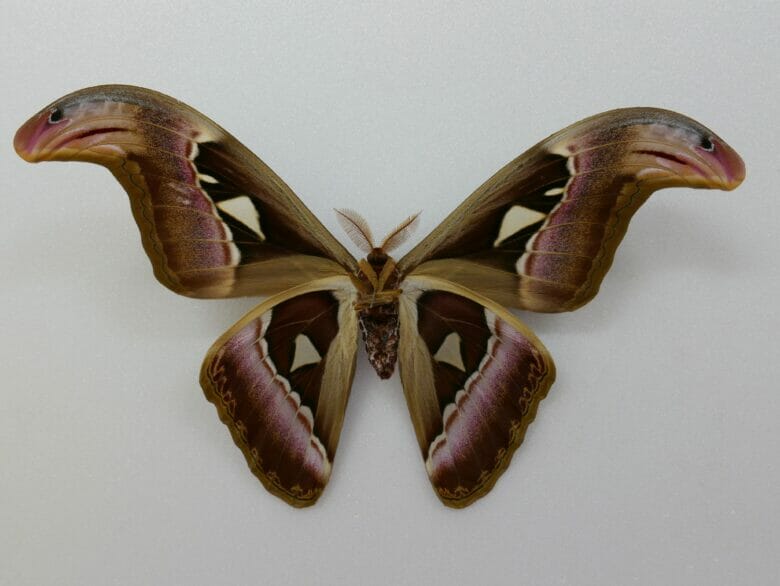
Their proboscis is tiny and non-functioning. Though it seems extraordinary, this is fairly common in moths. They live on the reserves they store as caterpillars.
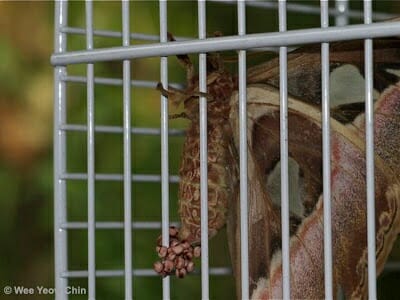
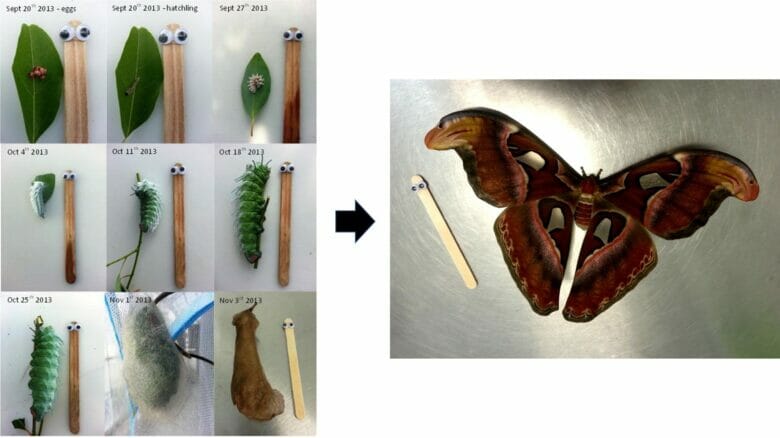
Once the atlas moth emerges from the cocoon as an adult, its sole purpose is to find a mate.
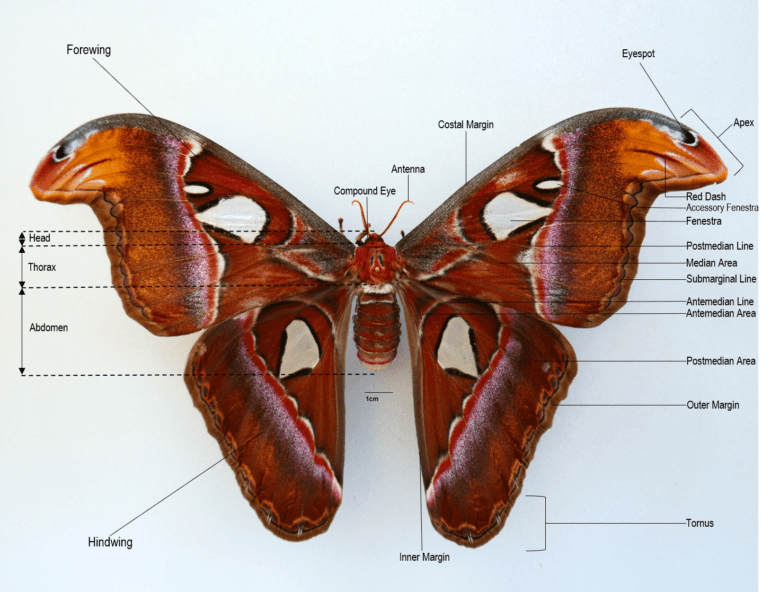
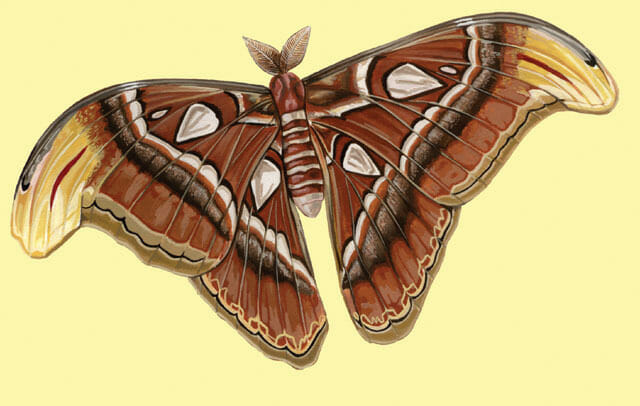
The moth doesn’t travel far from its cocoon, saving all of its energy for reproduction.
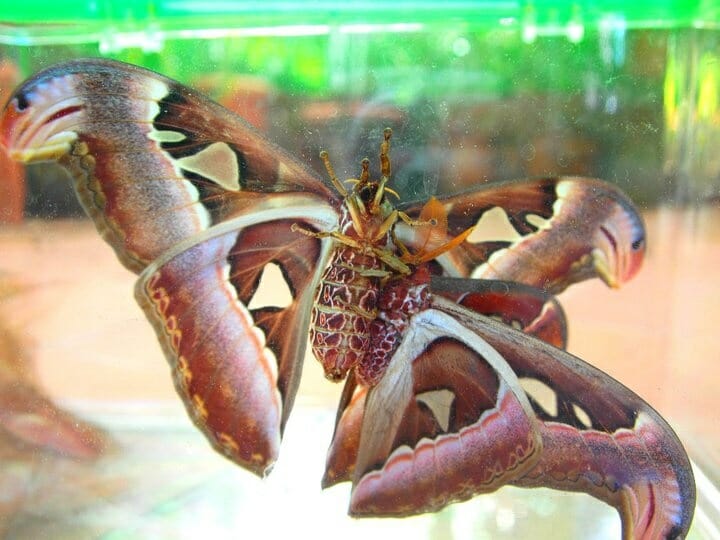
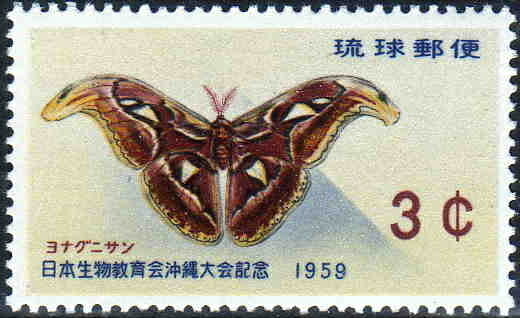
– Their Wingtips Are a Warning –
The atlas moth has what appears to be a built-in method for scaring off predators; its wingtips look just like cobra snake heads.
